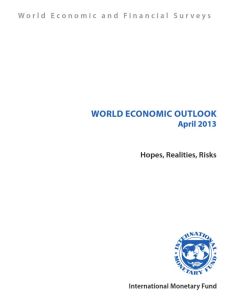Join getAbstract to access the summary!

Join getAbstract to access the summary!
Olivier Blanchard
World Economic Outlook April 2013
Hopes, Realities, Risks
IMF, 2013
What's inside?
Though risks remain, the threat of a global economic crisis has passed.
Recommendation
The International Monetary Fund has produced a clear outlook for the global economy. The picture is generally bright with a few issues on the horizon. If the global economy were a horse race, there would be three packs: China and emerging markets in front; the United States, Canada and Japan in the middle; and Europe lagging behind. For all the volatility the recession introduced, inflation has hardly shifted, suggesting that perhaps central bankers may have learned how to manage that important part of the economy. Though the paper’s language can be stiff at times, it’s tempered by the report’s eye-catching graphics and illuminating insights. getAbstract recommends this authoritative look at the world economy to executives and investors.
Summary
About the Author
Olivier Blanchard is economic counselor and director of research at the International Monetary Fund.



















Comment on this summary